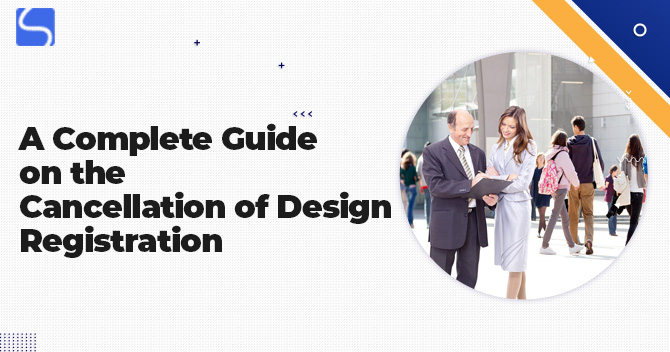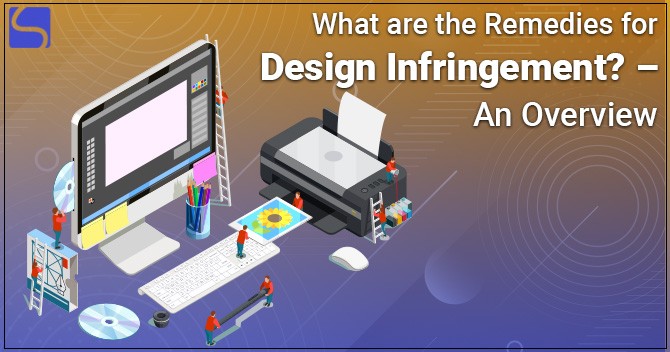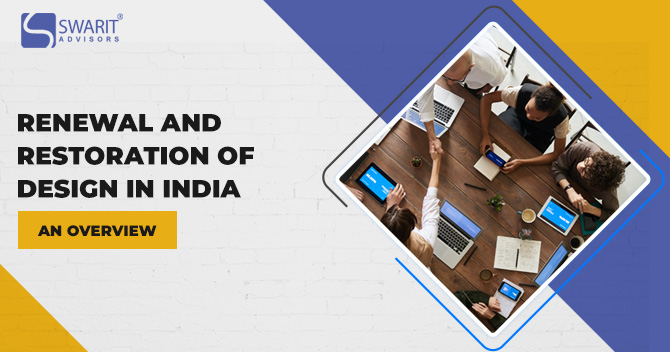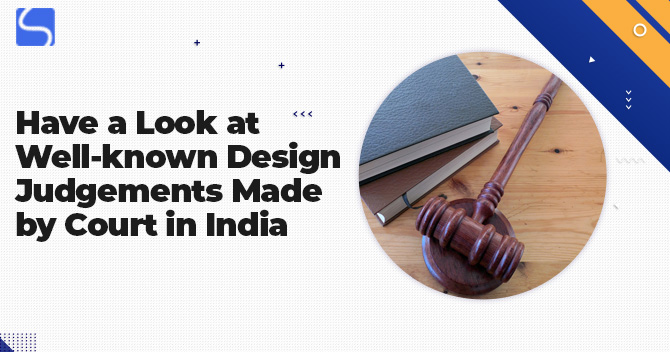A Complete Guide on the Cancellation of Design Registration

Karan Singh | Updated: May 11, 2021 | Category: Design
In India, the registered owner of a design is given special rights to their registered design. One such exclusive right is the cancellation of Design Registration. The registered owner or any other individual interested can file for a petition of Design Registration cancellation on the levels prescribed under the Design Act, 2000, read with the Design Rules, 2001. The cancellation process is also delivered in the Design Act and Rules concerning the Design Law of India. Scroll down to check more information regarding the cancellation of Design Registration in India.
Table of Contents
Let’s Understand About the Cancellation of Design Registration
There is no such concept of a pre-grant opposition in the Law of Design in India, like in the case of Patent Law. Such a difference depends upon the facts that the publication of design is done upon the Registration of the design. Design publication also involves the public examination of that registered design. Therefore, the Design Law on the lines of post-grant opposition in Patent Laws offers a chance for disproving any design after Design Registration only. The Design Registration can be challenged by introducing a petition for the cancellation of Design Registration on different grounds.
The Design Registration can be cancelled in case if the design has been earlier registered in India. Design publication in India or any other nation before the registration date can also lead to the cancellation of Design Registration in India. Section 19 (1) (b) of the Act can be categorized into two different parts, where one part denotes the “Published in India” and the other states “Publication in any other Nation”.
In India, the petition for the cancellation of Design Registration can be filed on some grounds, as described in Section 19 of the Design Act, 2000. The grounds for cancellation of Registration of design are as follows:
- The design is not unique and original;
- Design publication is already done within India or in any other nation before the registration date;
- The design is earlier registered in India;
- The design is not eligible for the Design Registration in the Design Act, 2000;
- Design is not a design as mentioned in Section 2(d) of the Design Act, 2000.
What are the Benefits of Design Registration?
Following are some significant advantages of Design Registration in India:
- Design Registration gives the registered proprietor the rights to file a case against any 3rd party who is trying to copy or misuse the design without any permission;
- The actual owner of a registered design is permitted to use their design to safeguard the market share; even the proprietor is eligible to dell the design for an amount of money;
- An article will be appealing and eye-catching only when it has a distinct design. A unique design adds some extra commercial value to the products and also increases the market value;
- The registered design owner is also allowed to develop their design in many ways;
- An attractive design will sell the products rapidly than the other products having no design. The promotions get a good build-up with a distinct design;
- Design Registration helps in recognition of the design to be exclusive to a specific registered owner, and the customers can at once do recognition of such a design.
Vital Requirements for the Cancellation of Design Registration in India
Following are some vital requirements for the cancellation of Design Registration in India:
- A petition for the cancellation of Registration of a design can be filed by an individual interest;
- The petition must be followed by a statement setting out details on which the petition for the cancellation of Registration with the Controller;
- The statement must also state the nature of the candidate’s interest to determine whether the petitioner is an interested individual or not;
- The petition for the cancellation of a registered Design must not be filed in Form 8 as prescribed in Rule 29 of the Design Rules, 2001;
- The fact that the cancellation of Registration is allowed must be published in the official journal;
- The Controller should decide on any opposition and the petition and should inform their decision to the parties;
- In case a petition of cancellation is filed in an office rather than Kolkata Patent Office, such a petition will be forwarded to Kolkata Patent Office;
- In case the petition for cancellation is made by any individual who is not the registered design owner, a copy of the petition for the cancellation of Design Registration along with the statement must be transmitted by the Controller to the registered design owner;
- The petition can be filed at any of the Patent Offices in India;
Procedure for the Cancellation of Design Registration
Following is the procedure for the cancellation of Design Registration:
- Any individual who wants to cancel the Registration can file a petition of the cancellation of Design Registration with the Controller in Form 9 accordingly Rule 29 of the Design Rules, 2007;
- The petition for the cancellation must be filed with the proof supporting the facts for filing a petition with the Controller;
- Once the petition is received by the Controller, he or she is required to send that petition to the registered owner quickly. The petition must be followed by the statement and proofs to support the petition filed for the cancellation of Registration of a design in India;
- Once the petition received by the registered owner, if he or she wants to file for the opposition, shall file for the petition. The opposition of a petition must be filed at the Patent Office of Kolkata. The opposition must be accompanied by the counter statement and proofs supporting the grounds on which the opposition brings out by the registered owner. The owner must file the opposition within one month from the date on which the Controller communicated a replication to the registered owner;
- The registered owner is required to provide a copy of the opposition of petition to the petitioner;
- The time period of 1 month is extendable to a maximum of three months. For such an extension in the time the registered owner is required to file a petition for expansion along with the required fees;
- The petitioner must file their statement of reply and proof through affidavit after the receipt of any proof & counter-statement from the registered owner. Such a reply statement and proofs by the petitioner must be filed to the Controller within one month from the delivery date of the counter statement and proof of the registered owner. The reply evidence of the petitioner must be severely limited to matters in the proof of the registered design owner;
- The time of one month for filing for reply statement and proofs is extendable. The time period can be extended to three months. The time can be extended by filing a petition for the extension along with the prescribed fees;
- The petitioner is required to provide a copy of their reply statement and proof to the registered owner;
- Apart from the direction of the Controller, no extra evidence provided to the registered owner;
- Where a document is in a language other than English and these documents are referred to any counter-statement or proof, an attested translation of such a document in replica in English must be provided to the Controller;
- When the filing of statement and evidence by the registered owner and petitioner is completed, the Controller is required at ten days of notice for hearing to both parties;
- On receiving the hearing notice by the Controller, if either of the party wants to be heard, a notice of intention to focus on the hearing must be filed by such a party. The notice of intention to focus on the hearing must be filed in Form 20 of Rule 29 of the Design Rules, 2001[1];
- The Controller can also decline to hear any party if in case any parties have not given such notice of intention and the required fee for the same;
- If either the party at the hearing plans to depend on any publication, which is not mentioned in the petitions for the cancellation of Design Registration, statement or proofs offered by the party, in such a case he or she is required to give another party and the Controller notice of their intention to do so. The party also needs to escort the details of such publication with the intention’s notice. Such notice should be given at least five days in advance by the party;
- The Controller, after hearing the parties, or if neither of the party wants to be heard, then without a hearing, must decide the petition for the cancellation of Design Registration and issue a speaking order in similar regard;
- The decision of the Controller will be informed to both the parties and be published in the Official Journal;
- Following entries, if any necessary, should be made in the Designs Register by the Controller.
Conclusion
The Design Rules, 2001 and the Design Act, 2000 deliver for the provision concerning the cancellation of Design Registration in India. The petitioner is needed to prove the levels available for the cancellation of Design Registration in India in Section 19 of the Act. The Controller plays a vital role in permitting the cancellation of Registration in India. The cancellation process is prolonged, and time is taken.
Read our article:What are the Benefits of Copyright Registration in India?














